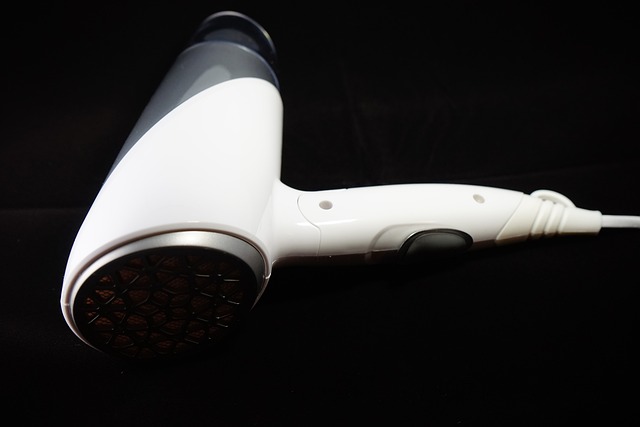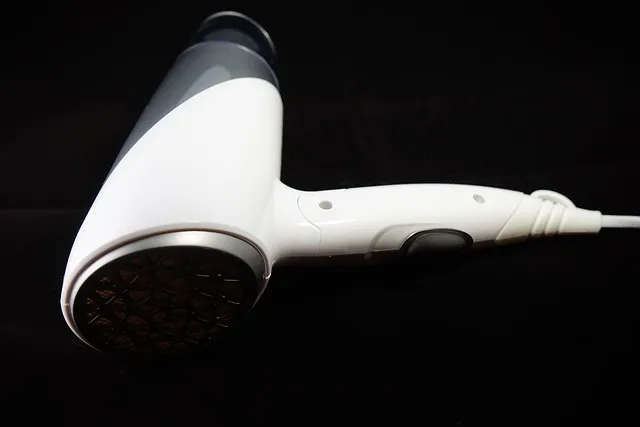What’s the Impact of Dryer Drum Size on Energy Consumption?
When you have a bigger drum, you’re essentially dealing with a larger space that needs to be warmed up every time you use the dryer. This means it takes more electricity to get that drum up to the right temperature. Imagine trying to heat a swimming pool versus a small bathtub – clearly, the pool needs way more energy to get to a comfy temperature. Similarly, your dryer drum’s size can impact how much power you’re drawing from the grid.
On the flip side, a larger drum can be a double-edged sword. While it does use more energy, it also lets you dry more clothes in one go, which can be quite efficient if you’re drying large loads. Fewer loads mean fewer cycles, which might balance out some of that extra energy use. It’s a bit like using a big oven to cook a large batch of cookies all at once, rather than baking them in small batches.
However, it’s important to match the drum size with your actual needs. If you’re constantly drying smaller loads, a massive drum might be overkill. In contrast, if you’re handling big, bulky items regularly, that extra drum space could be a lifesaver, despite the higher energy usage.
So, while a larger dryer drum does mean more energy consumption, it also offers potential benefits if used efficiently. It’s all about finding the right balance to keep your energy bills in check while keeping your laundry routine smooth and effective.
Big Drum, Bigger Bills? How Dryer Drum Size Affects Your Energy Costs
Let’s break it down. A big dryer drum might seem like the ultimate upgrade, but it’s not all about added space. Larger drums can take more time to reach the right temperature and maintain it. Imagine heating a giant pot of soup versus a smaller one—the larger pot takes longer to get hot and to keep hot. The same principle applies to your dryer. The bigger drum needs more energy to get your clothes dry, which directly impacts your energy bill.
Another point to consider is efficiency. Dryers with larger drums often require more power to operate. Even if you’re drying fewer loads, the energy needed to heat and maintain that larger drum is considerable. This extra energy consumption can make a noticeable dent in your monthly utility costs.
However, there’s a silver lining. Sometimes, a larger drum can actually be more efficient if you’re drying large loads all at once rather than multiple smaller loads. It’s like cooking in bulk—doing it once might be more energy-efficient than cooking several smaller meals.
So, while a bigger drum might be tempting for its capacity, it’s essential to weigh the benefits against the potential increase in energy costs. If you’re considering an upgrade, keep an eye on energy efficiency ratings and think about how often you’ll use that extra space. Balancing convenience and cost can help you make the best decision for both your laundry and your wallet.
Is Your Dryer Draining Your Wallet? The Hidden Cost of Drum Size
When you choose a dryer with a larger drum, you’re essentially opting for a more substantial appetite. Larger drums can handle bigger loads, which sounds fantastic on paper. However, they require more energy to heat up and dry those loads, leading to higher electricity bills. If you’re not careful, this seemingly minor feature can add up to a surprising amount over time.
Consider this: a standard dryer drum uses around 3,000 watts of power per cycle, while a larger drum might use more, depending on how it’s designed and the load size. It’s like driving a gas-guzzling SUV versus a fuel-efficient compact car. The bigger drum might seem convenient for those extra-large loads, but it could be costing you more than you realize.
Furthermore, bigger isn’t always better in the efficiency department. Dryers with larger drums can sometimes take longer to dry your clothes, as the heat has to spread across a bigger area. This means extended drying times and, consequently, higher energy consumption. So, before upgrading to that larger drum, consider your actual needs. If you often find yourself doing smaller loads, a smaller drum might be more cost-effective, saving you both energy and money in the long run.
Ultimately, understanding the true cost behind drum size could help you make a smarter choice for your wallet and the environment.
Small Drum, Small Impact? Understanding Energy Efficiency in Dryers

Picture this: you’ve got a dryer with a drum that looks like it could double as a small swimming pool. It’s tempting to think that a larger drum means more space for your laundry, which sounds great, right? But hold on—there’s more to the story.
A smaller drum means less air and less fabric to dry, which can actually lead to significant energy savings. When you’re drying a smaller load, the dryer doesn’t need to work as hard to heat up the air and circulate it through the drum. This translates to shorter drying times and less energy consumed. Think of it like trying to cook a small batch of pasta versus a giant pot; the smaller batch cooks faster and uses less energy.
But that’s not all. Smaller dryers are often more efficient in their use of heat. When the drum is smaller, the dryer can reach and maintain optimal temperatures more easily, ensuring that each item in the load gets thoroughly dried without excessive energy use. Imagine you’re trying to heat a tiny room versus a grand ballroom; the small room warms up much quicker and holds onto the heat better.
Moreover, modern dryers with smaller drums often come equipped with advanced sensors and technology that can detect moisture levels and adjust drying times accordingly. This means you’re not just saving on energy, but also protecting your clothes from over-drying, which can cause wear and tear.
So, while a small drum might seem like it could limit your laundry capacity, it’s actually a key player in energy efficiency. It’s a win-win situation: smaller drum, lower energy bills, and a lighter environmental footprint.
The Drum Debate: Does Size Really Matter for Energy Consumption?
Larger drums often come with a hefty price tag, not just in terms of the initial purchase but also when it comes to energy use. Think of it like this: a bigger drum might seem like a better investment because it can handle more volume, but if it’s not designed efficiently, you could end up burning more energy than you save. It’s like buying a giant SUV when a fuel-efficient car would do just fine.
On the flip side, smaller drums can be more energy-efficient because they often come with advanced technology aimed at optimizing performance. These smaller models are engineered to maximize every ounce of energy, much like how a compact car is designed to be both sleek and economical. So, if you’re eyeing a smaller drum, don’t dismiss it just because it’s not the biggest on the market.

But here’s where it gets interesting: it’s not just about size alone. Drum design, material quality, and how the drum is used play a massive role. A well-designed drum, regardless of size, can be far more energy-efficient than a poorly designed larger counterpart. It’s a bit like having a high-performance, turbocharged engine in a small car—it might be tiny, but it’s packed with power and efficiency.
Ultimately, the real question isn’t just about whether bigger is better. It’s about finding the right balance between size, efficiency, and energy use for your specific needs. So, before you make a decision, think carefully about what fits best with your energy goals and usage patterns.
How Dryer Drum Size Can Influence Your Utility Bills: A Deep Dive
Picture this: You’ve just tossed a load of laundry into your dryer. If your drum is on the smaller side, you’ll find yourself running multiple cycles to get everything dry. Each cycle uses up a chunk of energy, and those costs add up quickly. It’s like trying to fill a cup with a leaky faucet—the more you use it, the more you’re wasting.
Now, imagine you’ve got a larger dryer drum. You can fit more clothes in there at once, which means fewer cycles overall. Less time running means less energy consumed. It’s like having a larger bucket to fill from that same leaky faucet—fewer trips, less waste. A larger drum allows you to dry more clothes in one go, optimizing your dryer’s efficiency and saving you money.
But it’s not just about size. A larger drum can also help your clothes dry more evenly. When your clothes have more space to tumble around, they get more exposure to the heat, which means they dry faster and more thoroughly. This not only helps in reducing the number of cycles but also cuts down on the wear and tear of your clothes.
So, the next time you’re considering a dryer upgrade, think about the drum size. Opting for a larger drum can be a smart move for both your wardrobe and your wallet.
Energy Efficiency 101: What You Need to Know About Dryer Drum Size
A bigger dryer drum means you can dry more clothes in one go, which sounds great, right? But if you’re constantly drying just a few items, that extra space is essentially a giant energy hog. It’s like running a marathon when all you need is a quick jog around the block. The more empty space in the drum, the more energy is used to heat up that extra air, which isn’t very efficient at all.
On the flip side, if your drum is too small for your laundry load, you’ll end up running more cycles, which adds up to more energy used and more wear and tear on your dryer. It’s a balancing act.
To maximize energy efficiency, you should aim for a drum size that matches your typical load. Larger families might need a bigger drum to handle all that laundry in fewer cycles, while individuals or couples might find a smaller drum more practical.
Also, keep in mind that the dryer isn’t the only player in the energy efficiency game. Properly sorting and drying your clothes—like cleaning the lint filter regularly and using the right drying settings—can also make a significant impact. So, while drum size is an important factor, it’s part of a bigger picture of keeping your energy bills in check.
From Compact to Jumbo: The Energy Implications of Different Dryer Drum Sizes
Let’s dive into it. A compact dryer drum might seem like a space-saver, but it often means running multiple loads to get through all your laundry. More loads mean more energy consumed. It’s like taking a series of short trips in your car rather than one longer trip; you’re using more fuel overall.
On the flip side, a jumbo dryer drum offers the luxury of handling larger loads in one go. This means fewer cycles and, potentially, less energy used. Imagine cramming all your groceries into one big shopping trip rather than multiple smaller ones—less hassle and more efficient.
However, it’s not always that straightforward. A larger drum can also lead to higher energy use if the dryer isn’t fully loaded. Think of it as having a big pot on a small burner; you’re not getting the most out of your energy.
Additionally, modern dryers often come equipped with energy-efficient technologies that help optimize performance regardless of drum size. Features like moisture sensors and smart drying cycles adjust the dryer’s operation based on the load, which can mitigate some of the energy drawbacks of larger drums.
Ultimately, the key to maximizing energy efficiency lies in balancing drum size with proper loading practices. Understanding this balance can help you make a more informed decision and keep your energy costs in check while managing your laundry.

